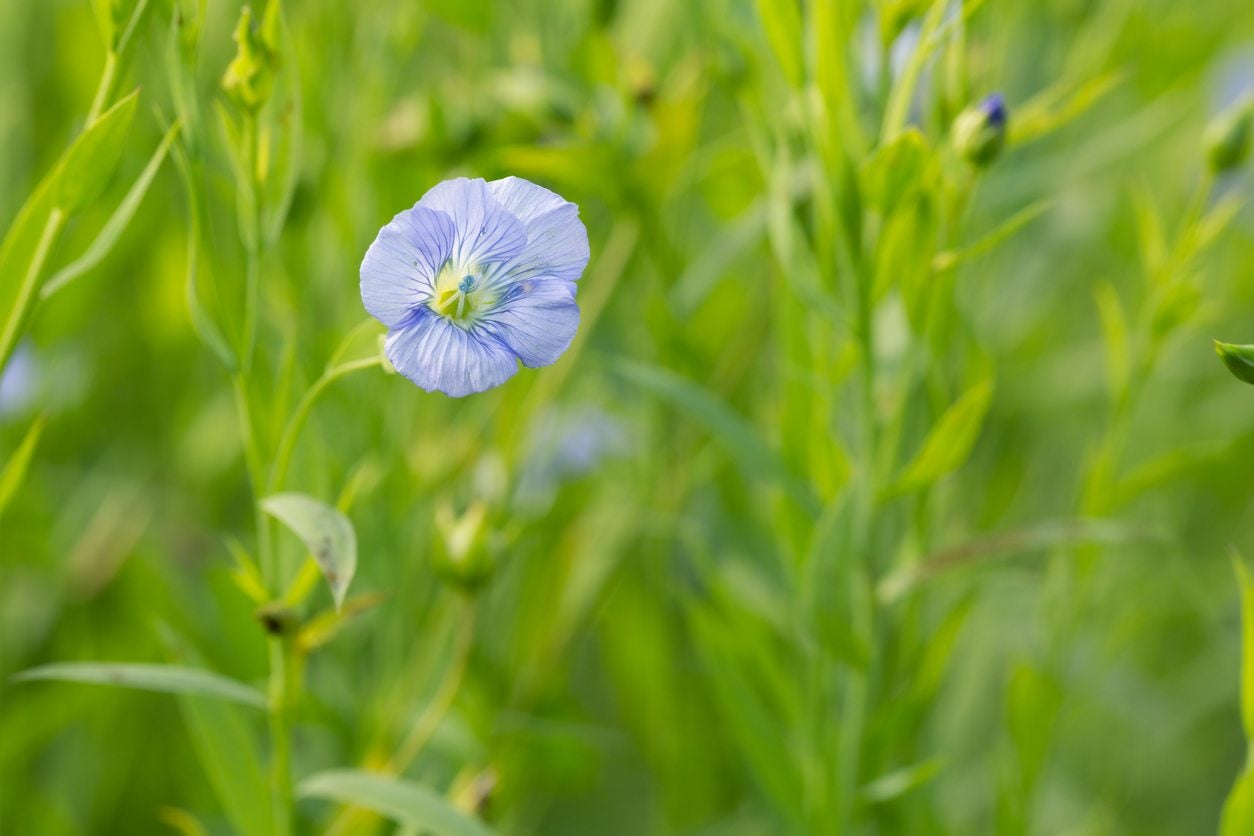What Is Flaxseed – Tips On Growing Your Own Flaxseed Plants


Flax (Linum usitatissimum), one of the first crops domesticated by man, was used primarily for fiber. It wasn’t until the invention of the cotton gin that flax production began to decline. In recent years, we have become more aware of the plant’s many benefits – primarily the nutritional content of the seeds.
What is Flaxseed?
Exactly what is flaxseed and why is it so important? Flaxseed, rich in fiber and Omega-3 fatty acids, is considered by many to be a wonder food that may reduce the risk of serious health problems, including diabetes, liver disease, cancer, stroke, heart disease, and depression. Your next question may be, “Can I grow flaxseed in my garden?”. Growing your own flaxseed isn’t difficult, and the beauty of the plant is an added bonus.
How to Grow Flaxseed Plants
Growing flaxseed on a commercial level can be a complicated process, but planting flax from seed in your garden is easier than you may think. In fact, you’ve likely grown its wildflower cousins, blue flax and scarlet flax before, or know someone who has. Common flax, like its cousins, is a cool-season plant, and the seeds should be planted as soon as the ground can be worked in spring. A late frost won’t usually harm the plants once they emerge, as seedlings with at least two leaves can tolerate temperatures as low as 28 F. (-2 C.). Look for a sunny, sheltered planting site when planting flax from seed. Although flax will adapt to most well-drained soil types, rich soil is optimum. Dig in a generous amount of compost, manure, or other organic matter, especially if your soil is poor. Work the soil well and smooth it with a rake, then sprinkle the seeds evenly over the prepared soil at a rate of about 1 tablespoon (15 mL.) of flaxseeds for every 10 square feet (1 sq. m.) of planting space. Hint: Dusting the tiny seeds with flour before planting will make them easier to see. Rake the soil lightly so the seeds are covered with no more than ½ inch (1.5 cm.) of soil, and then water the area, using a fine spray to prevent washing the seeds from the soil. Watch for the seeds to germinate in about 10 days. Water the seeds regularly to keep the soil evenly moist, but not drenched. Once the plants are established, supplemental irrigation is needed only during periods of warm, dry, or windy weather. A thin layer of mulch will help control weeds while moderating soil moisture and temperature. Usually, established flax plants will choke out weeds; however, regular weeding is critical when the plants are small. Work carefully, pulling by hand to avoid damaging the tiny flax roots. Flax plants don’t necessarily require fertilizer, but if your soil is poor, the plants will benefit from a diluted solution of water-soluble fertilizer every two weeks until seed heads appear. At this point, withhold water so the seed heads ripen and turn golden yellow. Harvest the seeds by pulling entire plants up by their roots. Bundle the stems and hang them in a dry place for three to five weeks, or until the seed heads are completely dry.
Sign up for the Gardening Know How newsletter today and receive a free copy of our e-book "How to Grow Delicious Tomatoes".

A Credentialed Garden Writer, Mary H. Dyer was with Gardening Know How in the very beginning, publishing articles as early as 2007.